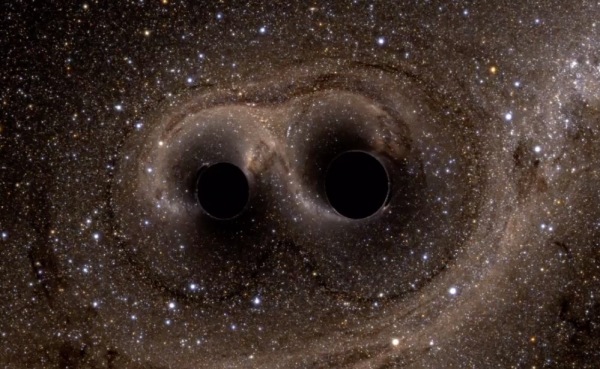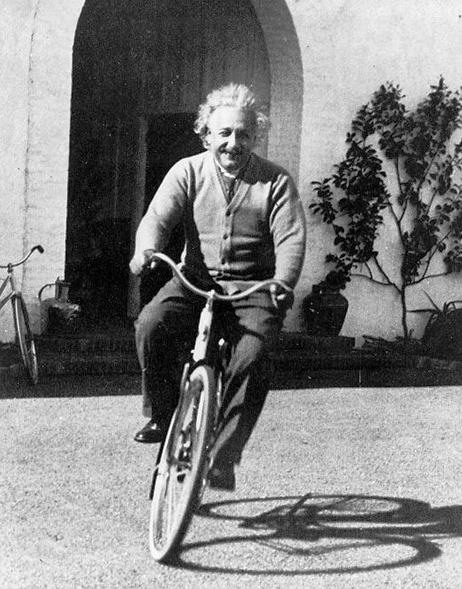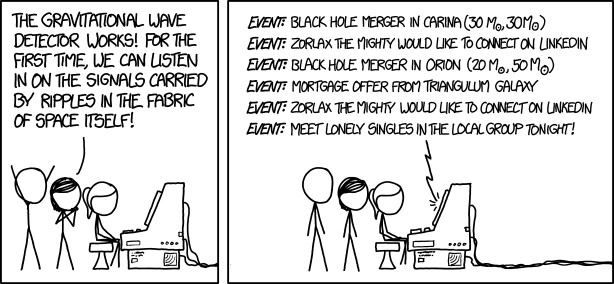
In what has truly turned out to be a momentous occasion in astrophysics, today scientists announced the first-ever direct observation of gravitational waves by the Laser Interferometer Gravitational-wave Observatory (LIGO) experiment, which consists of two enormous detector facilities located in Louisiana and Washington state and an international consortium of thousands of researchers.
First predicted by Albert Einstein in 1915, gravitational waves are the “ripples” in the fabric of space-time created by exceptionally turbulent and powerful cosmic events. Physicists have accepted their existence for decades and in recent years have even observed their effects, but only with the incredible sensitivity of the NSF-funded advanced LIGO instrument has their direct detection been made possible.
“This was truly a scientific moon shot, and we did it. We landed on the moon.”
– David Reitze, Executive Director of LIGO
In a nutshell, on September 14, 2015 the twin LIGO detectors each picked up a signal that ever-so-briefly rose above the background noise. This was a signal that the instruments were specifically designed to detect: the “chirp” of gravitational waves spreading through our planet on its way across the Universe. The source of the waves? A merging of two stellar-mass black holes located somewhere in the direction of the Magellanic Clouds…and around 1.3 billion light-years away.

The black holes individually are estimated to have been 29 and 36 times the mass of our Sun and were caught in an ever-tightening co-orbital embrace. When they eventually collided over a billion years ago, the energy of the resulting explosion equaled more than 50 times the output of the visible Universe—yet remained electromagnetically invisible.
Based on Einstein’s famous E=mc2 formula all of that sudden conversion of mass into energy was powerful enough to create a perturbation—a wave—in the fabric of space that spread outwards across the Universe and, thanks to LIGO, could be perceived from Earth. It’s really an incredible feat considering that 1. the event happened 1.3 billion light-years away, and 2. the passing ripple itself lasted only a fraction of a second—and was only 1/1000th the size of an atom nucleus. (Learn more in this video from Caltech.)
Find out how gravitational wave detectors work.
This discovery comes at the culmination of decades of instrument research and development, through a world-wide effort of thousands of researchers, and made possible by dedicated support for LIGO from the National Science Foundation. It also proves a prediction made 100 years ago by Einstein that gravitational waves exist. More excitingly, it marks the beginning of a new era of gravitational wave astronomy – the possibilities for discovery are as rich and boundless as they have been with light-based astronomy. (Source)
Learn more about LIGO, gravitational waves, and these findings in the video below from MIT.
In addition to being the first direct detection of gravitational waves—proving both that they exist and that we have the technology to find them—LIGO’s findings also reveal the presence of binary black holes, which have long been hypothesized but never before detected.
“Now that we know binary black holes are out there we will begin listening to the Universe.”
— Gabriela González, researcher at LSU and spokesperson for the LIGO Scientific Collaboration
Congratulations to the extensive LIGO science team and the funding organizations for this discovery! And, as the instruments’ detecting power is increased to their full potential over the course of the year, we can only expect to hear more and more from this exciting new field of gravitational astronomy.

Read the official news release here and watch the Feb. 11 press conference here, and find more good coverage of this news at the links below:
Discovery News: We Just Heard the Spacetime ‘Chirp’ of Black Hole Rebirth by Ian O’Neill
The Atlantic: The Dawn of a New Era in Science by Matthew Francis
Science: Gravitational waves, Einstein’s ripples in spacetime, spotted for first time by Adrian Cho
Nature: Einstein’s gravitational waves found at last by Davide Castelvecchi & Alexandra Witze
Forbes: The First Detection Of Gravitational Waves Validates Einstein In A Whole New Way! by Ethan Siegel
GeekWire: Gravitational waves found! LIGO experiment watches two black holes smash together by Alan Boyle
And, if you’re wondering why you should care about this discovery even if you’re not a physicist, read this article from Marshall Shepherd on Forbes.
Source/learn more at LIGO/Caltech
Added 2/12: Of course, now that we can tune in to gravitational waves we;ll have to learn how to filter out all the gravitational spam… 😉

Looks like. So many things look like. I stay with what the bible teaches amid gales of laughter. I do not trust what seems, and have been wrong in what seemed a lot. Very ‘timely’ finding as FE are threatened with removal from proboards.
I think space might be an illusion itself.
And I know nobody expects everyone to agree. The more complex, less likely.
Great pictures.
LikeLike
I think that it’s amazing that something so complex can be discovered by humans. The text was very specific and very informational. Great work!
LikeLiked by 1 person
Good article Jason. And yes, Einstein was thus right on the gravitational waves. I hope that this discovery will allow… some more of discoveries !!
Jeff Barani from Vence (France)
LikeLiked by 1 person